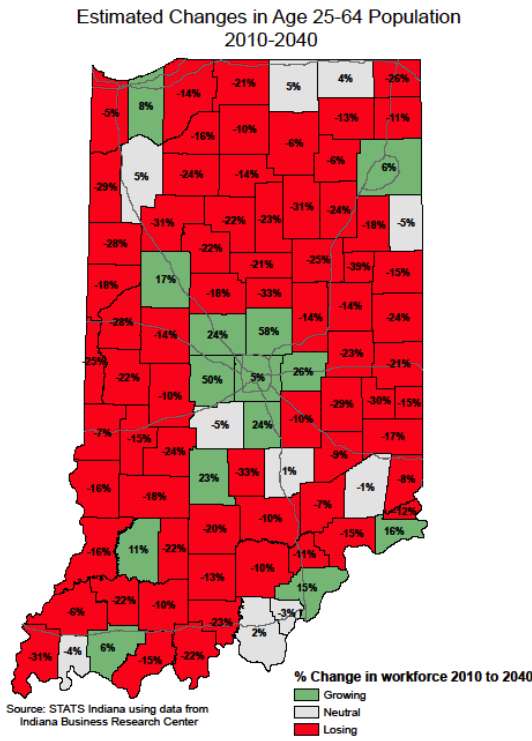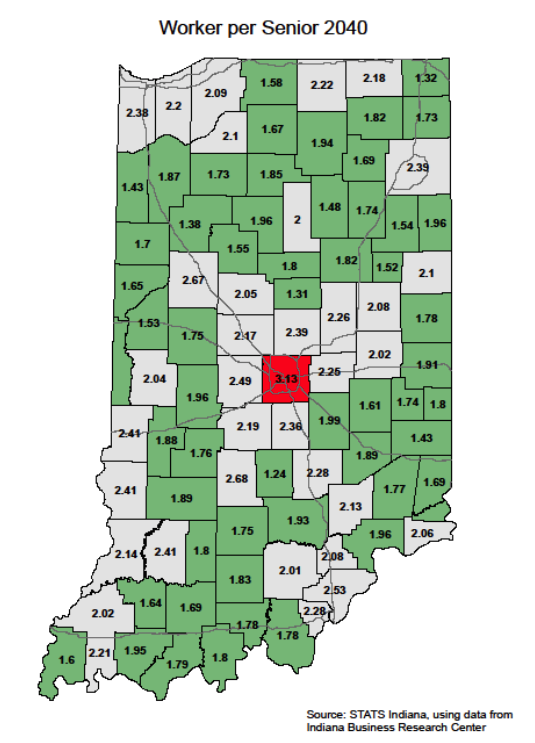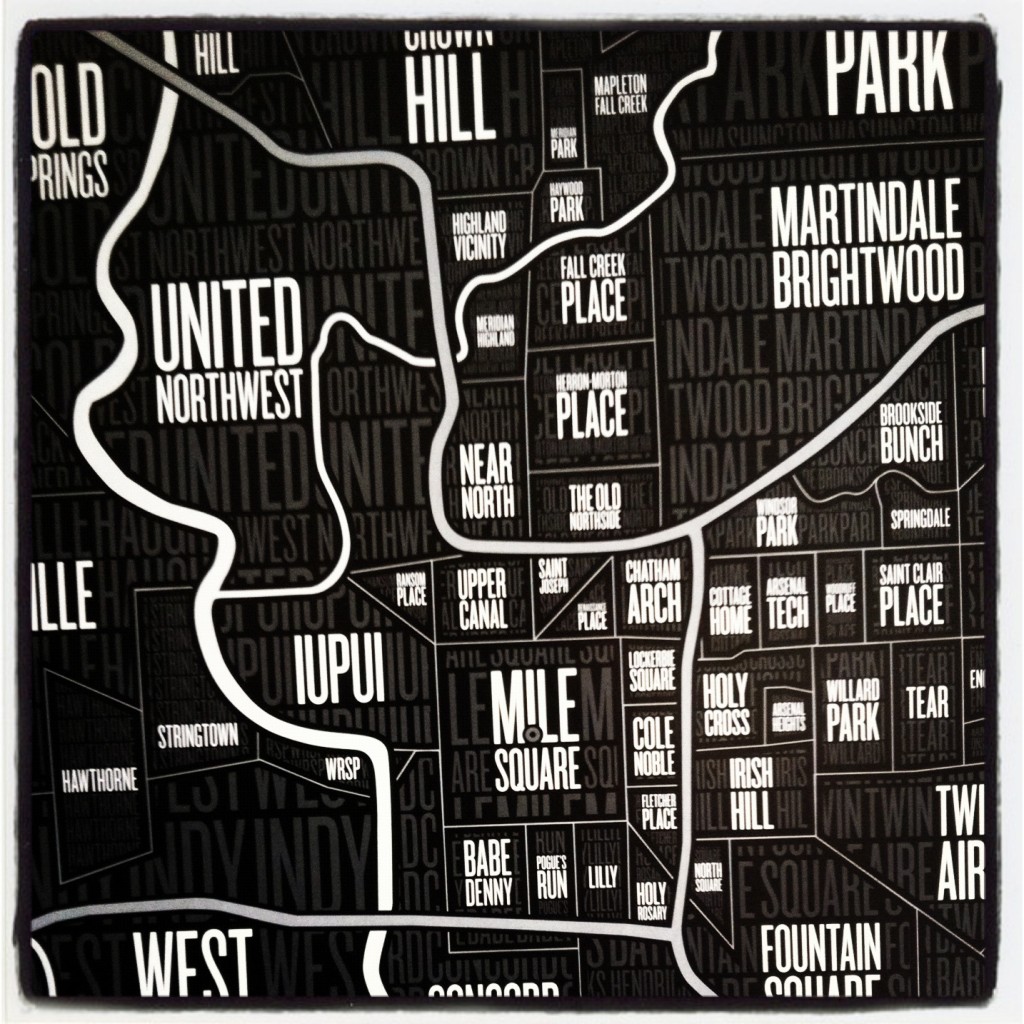Indy on the Rise
We hear it said often that the world is changing. From the constant ebb and flow in our respective worldviews, to the perceived progression (or perhaps perceived digression) of our respective cultures, change is happening. While the majority of us undoubtedly know this to be true, it can often seem abundantly generalized to the extent that, in our own particular context, it becomes ambiguous. What exactly is changing here and now, and how is said change affecting the immediate world around us? To help us with this question, Indiana University Senior Policy Analyst Drew Klacik has made the change happening in Indianapolis a bit more concrete. As a Senior Policy Analyst, Klacik’s main areas of work have included economic development, state and local taxation, and affordable housing development policy. A great deal of his time is spent focusing on Indiana and how these issues interact and affect the quality of life, and economic health of metropolitan areas. In his recent work, Klacik has depicted a bird’s eye view of the anthropological changes happening in the state of Indiana, or, as he puts it, the two states of Indiana.
To clarify, these two states Klacik portrays boil down to Indiana’s metropolitan areas, or regions consisting of a densely populated urban core with its less populated surrounding territories, and rural areas, or geographic locations far removed from cities or towns. While it’s probably redundant to say at this point, Indiana is changing and consequently, so is our city. Why? Well, people are on the move. In Klacik’s preliminary work, he has projected that metro Indianapolis will experience a positive shift in population density to the tune of around 33% over the next 30 years. This means that we will see around a 20% increase in the workforce while rural Indiana will see a decrease of around 11%. Translation? Indianapolis, as well as other metropolitan areas in Indiana, is growing, and rural Indiana is seeing a decline in population. The move back to the city is underway.
This move, while riveting for both present and future urbanites, however, cannot be made without compromises. For, as Klacik has said, “Cities, in a way, are like households: What’s our priority? For most of us mortals, the answer involves compromise. I might choose to buy a great TV and a nice driver for my golf game. A neighbor might choose a fast car. Another might choose to travel. What we choose doesn’t determine whether we’re striving. We might all be striving, yet we can’t have it all. The same holds true for community.”

According to Klacik, what we can expect in the coming decades in our city is around a 5% increase in workforce resulting in 2.6 to 1 workforce to senior ratio by the year 2040. The critical element to be derived from this ratio is that this increase in work, while increasing Indy’s sustainability, is rendering rural areas less sustainable. These numbers leave us, in Klacik’s estimation, with some critical compromises that must be made in the near future. Will we invest in the future of millenials, or will we manage the decline of the baby boomers? Will we turn the majority of our focus toward health care, or to the education system?
One thing is for sure that Klacik points out. The fact that metro areas are growing and rural areas are shrinking has great significance for Indy’s urban core. This migration means that the authentic urban neighborhoods will increasingly fill as these areas provide us with common ground for our decision-making. Klacik explains, “While many look down on the notion of compromise, I think of it as the key component of incremental progress, and the failure to compromise as the enabler of inaction. When choices must be made, it’s critical that incremental progress be viewed from two perspectives: How far we’ve come, and how our progress compares with that of other communities.”
So what does this mean for us now? This migration presents us with both challenges, and opportunities in the present. With respect to migratory challenges, this move from rural areas to metro areas is, for the most part, isolated within Indiana. This means that the majority of this migration is characterized, not by people moving into metropolitan Indiana from other states, but by a population density shift almost exclusively in Indiana (hence the sustainability issue in rural areas of the state). This challenge presents us with a unique opportunity to make Indianapolis more attractive to citizens from other states. By ushering in a new generation of honorary Indianapolis Hoosiers, we will bring a fresh and diverse perspective to our city while also increasing the sustainability of our state.
Additionally, this migration creates a unique opportunity to draw new neighbors into Indy’s urban neighborhoods. And with the opportunity to attract new neighbors to downtown Indianapolis, the migration provides us with a new motivation for urban neighborhood revitalization. Now is this time to invest in the future of our neighborhoods by working to create attractive, thriving, and beautiful communities today. Now is the time to brainstorm ways to make our downtown neighborhoods more attractive to people that might initially be more attracted to suburban Indianapolis.
So what practical steps can be taken to make urban revitalization happen in our neighborhoods? Start attending your neighborhood’s meetings, get familiar with the work being done by your local community development corporation, and partner with the City Gallery and find out how you can get involved. New neighbors are coming so let’s bring them into our story with a bang.
The urban state of Indiana is on the rise. It’s time to evaluate how we steward its resources well for the generations to come.



